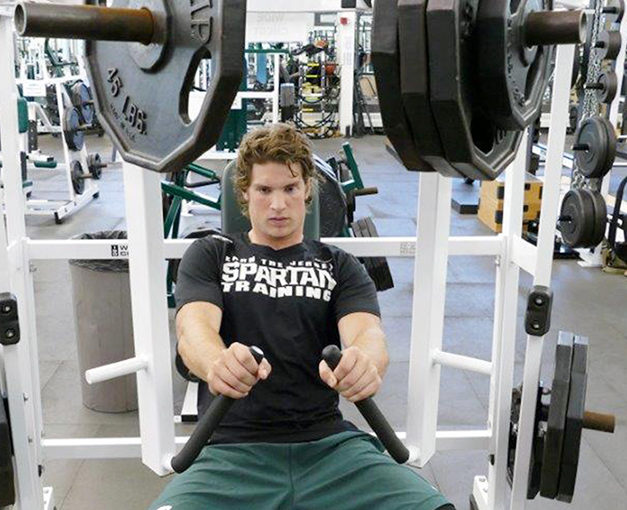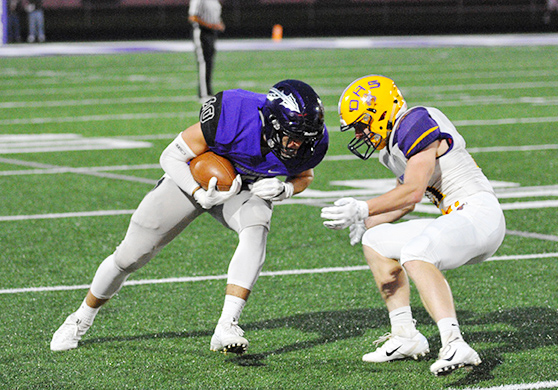Powerline: Dangerous Dog Days for Student-Athletes
As I’m writing this column for the June publication, no one is sure when training athletes will resume at colleges and high schools. When schools take the locks off weight rooms and training does resume, strength coaches need to be especially careful to bring the students along at a safe pace and not force them to over train. When an athlete takes time off from training they can expect to become detrained. A decrease in performance is directly related to the inactivity of the muscles that have been atrophied from nonuse. All across the world student-athletes haven’t been able to train properly the past several months due to schools shutting down and closing facilities. Social distancing and other recommendations have been required.
When and if training resumes, strength coaches need to be sure they are familiar with recognizing signs and symptoms of heat-related illness that may lead to sudden death. For example, college football has experienced more than 20 indirect sudden deaths with 55 percent occurring on the first or second day of a new practice period. That’s even when the athletes had the opportunity to train properly leading up to these first practices. Many heat strokes have occurred in weather between 50 to 60 degrees Fahrenheit and mostly due to the high intensity of the exercise. The first two weeks of practice are some of the most dangerous times for athletes as they are performing new exercises and adjusting to new environmental conditions. Be careful not to allow your sports coaches to demand more than the athletes can handle. I would suggest having a water-filled tub at every conditioning session. Experts recommend lowering the body temperature in a water tub quickly can help save a life.
 It is also important to consider if your athletes have been training in the correct energy system for their sport. Because of a lack of available facilities football athletes may have chosen aerobic exercises (distance running) which is not the correct energy system they should be training in. Too much endurance training interferes with the development of fast-twitch muscle fibers. If fast-twitch fibers are not activated with proper training, the athlete’s quickness will suffer first, then their speed, power, and strength.
It is also important to consider if your athletes have been training in the correct energy system for their sport. Because of a lack of available facilities football athletes may have chosen aerobic exercises (distance running) which is not the correct energy system they should be training in. Too much endurance training interferes with the development of fast-twitch muscle fibers. If fast-twitch fibers are not activated with proper training, the athlete’s quickness will suffer first, then their speed, power, and strength.
Also, be aware when athletes are allowed to return to conditioning the baseline level of your group will not all be the same. Some will not have missed a workout and some will barely have done anything at all. Avoid throwing your athletes into an advanced conditioning program until they can catch up to the demands.
Strength coaches must ensure that appropriate intensity, duration, hydration, and rest protocols are followed. Review the standards and guidelines for your facility, program, and supervision. All emergency action plans should be communicated to and practiced by the entire strength and conditioning staff and presented in orientation meetings with student-athletes. Be sure to include the athletic trainers.
- Review your emergency action plan, and conduct a proper orientation with your staff and athletes on those emergency procedures prior to anyone using the facility?
- Does each athlete have a waiver and physical examination/health clearance prior to participation? This should be mandatory before any athletes participate in a strength or conditioning activity.
- Is safety equipment such as AEDs, First Aid kits, located in easily accessible areas that are clearly identified?
- Does every member of your coaching staff have updated certifications in CPR, AED use, and First Aid?
- Have you inspected the training area to ensure the area is free of danger before training begins? This sounds pretty simple but accidents can happen when a hazard is not removed.
- Do you have telephones available in the strength and conditioning facility with emergency numbers posted? Do you have a cell phone or 2-way radio available when training outside in case an incident occurs on the field? At the University level athletic trainers usually handle this communication but many high schools don’t have an athletic trainer present at all workouts so the strength coach needs to provide a means of communication in the event of an emergency. If your conditioning is done on a sports field several hundred yards away from the athletic training office make sure you have a cell phone or 2-way radio available to communicate with them.
- Do you have water or sports drinks available for your athletes at all times so they stay properly hydrated?
- Are you familiar with recognizing signs and symptoms of heat-related illness that may lead to sudden death?
- Have you organized a plan for novice athletes, incoming freshman, transfers, and walk-ons to physically and mentally prepare them for rigorous conditioning programs used for returning athletes? This is especially important this year as most training facilities were shut down so athletes were on their own for conditioning.
- Make sure no strength and conditioning exercise or drill is used as a form of punishment.
- Are your athletes training in the correct energy system for their sport? Are you sure?
- Is a qualified supervisor present at all times during training? Supervisors should be certified by either the NSCA or CSCCa.
These guidelines are especially important this summer. Prepare to be safe.
Boyd Epley was the Head Strength Coach for the University of Nebraska for 35 years, is a Hall of Fame Strength Coach, and founder of the National Strength and Conditioning Association.





